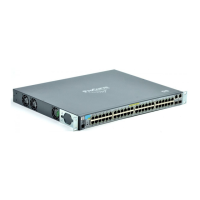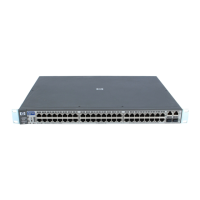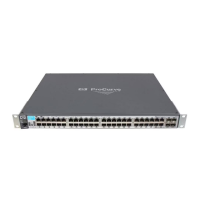Port Trunking
Port Status and Configuration
Listing Static LACP and Dynamic LACP Trunk Data. This command
lists data for only the LACP-configured ports.
Syntax: show lacp
In the following example, ports A1 and A2 have been previously configured
for a static LACP trunk. (For more on “Active”, see table 12-5 on page 12-18.)
Figure 12-6. Example of a Show LACP Listing
Dynamic LACP Standby Links. Dynamic LACP trunking enables you to
configure standby links for a trunk by including more than the maximum
number of allowed ports in a dynamic LACP trunk configuration. When the
maximum number of allowed ports (trunk links) are up, the remaining link(s)
will be held in standby status. If a trunked link that is “Up” fails, it will be
replaced by a standby link, which maintains your intended bandwidth for the
trunk. (See also the “Standby” entry under “Port Status” in table 12-5, "LACP
Port Status Data", on page 12-18.)
Using the CLI To Configure a Static or Dynamic Trunk Group
Important Configure port trunking before you connect the trunked links between
switches. Otherwise, a broadcast storm could occur. (If you need to connect
the ports before configuring them for trunking, you can temporarily disable
the ports until the trunk is configured. See “Using the CLI To Configure Ports”
on page 10-10.)
12-12
